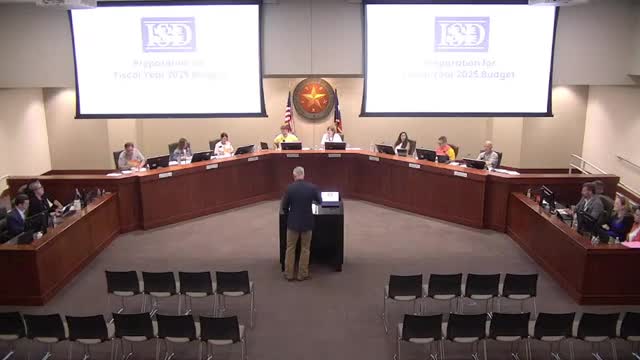School district faces $5 million deficit amid rising costs
August 30, 2024 | BOERNE ISD, School Districts, Texas
This article was created by AI summarizing key points discussed. AI makes mistakes, so for full details and context, please refer to the video of the full meeting. Please report any errors so we can fix them. Report an error »

In a recent government meeting, officials outlined their approach to preparing the budget for fiscal year 2025, emphasizing the challenges posed by static revenue and rising costs. The discussion highlighted a projected deficit of $5.2 million, attributed to a combination of factors including inflation, stagnant state funding, and increased operational costs.
The meeting began with a review of the previous budget adoption process, revealing that the district had faced a $4.8 million deficit in the adjusted budget for the 2023-2024 fiscal year. This deficit was partially mitigated by an unexpected surplus from the previous year, which allowed for one-time employee bonuses and other costs. However, officials noted that the financial landscape is shifting, with anticipated changes in interest rates and state funding methodologies that could impact future revenues.
Key concerns were raised regarding the lack of legislative investment in public education, which has not seen an increase in basic allotment since 2019, despite rising inflation. Officials pointed out that five major cost drivers have significantly increased expenses, from $5 million in 2019 to over $9.5 million in the current fiscal year, with projections indicating further increases.
To address these financial pressures, the district plans to engage the community through a budget strategy and advocacy committee. This initiative aims to educate stakeholders about school funding and gather input on budget priorities. Meetings are expected to commence in mid-fall, with recommendations to be presented to the board in early spring.
As the district navigates these unprecedented financial challenges, officials are committed to conducting thorough reviews of departmental budgets and exploring operational efficiencies to ensure fiscal responsibility while meeting the needs of a growing student population.
The meeting began with a review of the previous budget adoption process, revealing that the district had faced a $4.8 million deficit in the adjusted budget for the 2023-2024 fiscal year. This deficit was partially mitigated by an unexpected surplus from the previous year, which allowed for one-time employee bonuses and other costs. However, officials noted that the financial landscape is shifting, with anticipated changes in interest rates and state funding methodologies that could impact future revenues.
Key concerns were raised regarding the lack of legislative investment in public education, which has not seen an increase in basic allotment since 2019, despite rising inflation. Officials pointed out that five major cost drivers have significantly increased expenses, from $5 million in 2019 to over $9.5 million in the current fiscal year, with projections indicating further increases.
To address these financial pressures, the district plans to engage the community through a budget strategy and advocacy committee. This initiative aims to educate stakeholders about school funding and gather input on budget priorities. Meetings are expected to commence in mid-fall, with recommendations to be presented to the board in early spring.
As the district navigates these unprecedented financial challenges, officials are committed to conducting thorough reviews of departmental budgets and exploring operational efficiencies to ensure fiscal responsibility while meeting the needs of a growing student population.
View full meeting
This article is based on a recent meeting—watch the full video and explore the complete transcript for deeper insights into the discussion.
View full meeting
